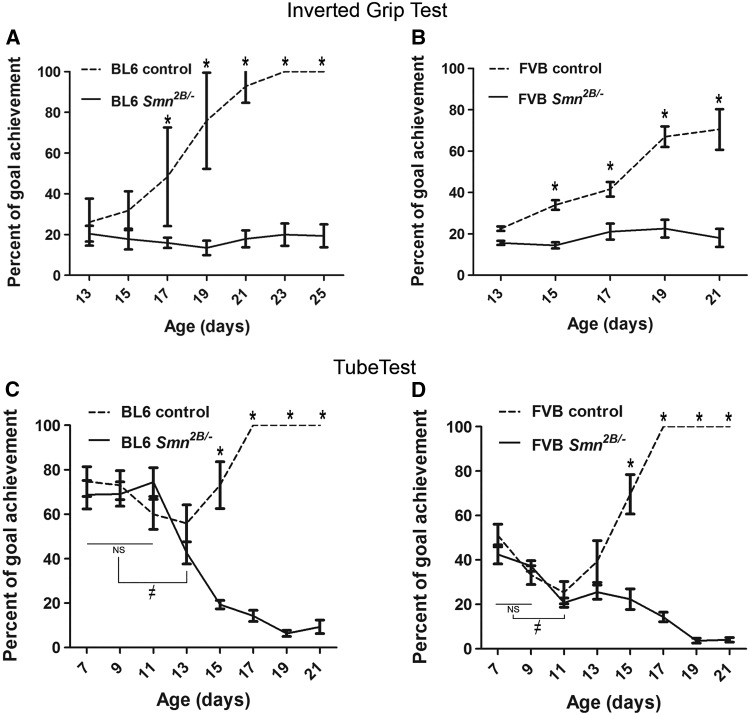Figure 3.
Muscle weakness occurs at earlier ages in FVB Smn2B/-mice than in BL6 Smn2B/-mice. (A and B) Analysis of the results from inverted mesh grip tests showing that Smn2B/-mice had a shorter latency to fall than their control littermates after PND17 in BL6 Smn2B/-mice (A) and after PND15 in FVB Smn2B/-mice (B), (two way ANOVA, P < 0.05). There were no significant changes in latency to fall times of Smn2B/-mice (solid lines) of both strains during the test period (repeated measures ANOVA, P > 0.05). (C and D) Analysis of hind limb suspension test (also known as tube test) revealed that Smn2B/-mice suspended from their hind limbs had a shorter latency than their control littermates after PND15 in both strains. The latency to fall time of FVB Smn2B/-mice was significantly shorter at PND11 than earlier ages (D, ≠ on the solid line). In BL6 Smn2B/-mice the latency to fall time was shorter at PND13 than earlier ages (C, ≠ on the solid line) (repeated measures ANOVA, P <0.05). The goal was set as 60 s for the inverted grip test (A and B), and as 60 s or climbing out of the tube for the tube test (C and D). * indicates significant difference between Smn2B/-mice and their control littermates.

